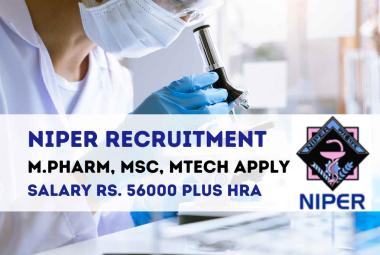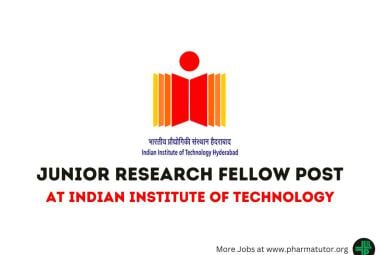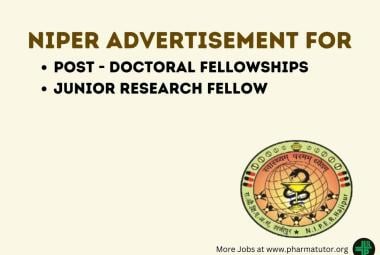{ DOWNLOAD AS PDF }
ABOUT AUTHORS
Dr. Vishwas*, B. Chavan
Aditya Jyot Eye Hospital and Foundation
*vishwaschavan2003@yahoo.co.in
ABSTRACT
Cancer is one of the leading causes of morbidity and mortality worldwide. Many patients succumbed to the disease despite best efforts from medical and surgical oncologists. This is because of several challenges like treatment resistance, genetic heterogeneity of tumor cells and high cost of new therapies. It is clear from the recent research that to overcome cancer, a gentler approach is necessary. This approach include controlling inflammatory processes, discovering compounds which can offer minimum resistance from cancer cells, targeting therapy where it is actually needed and increase strength of the patient’s body by non-drug ways like exercise and modulating gut microflora. Scientists can help the patients more directly by devising more clinical level studies and publishing results as much as possible, even negative ones (like failure of a novel drug to treat cancer), to avoid loss of precious time and money. A coordinated effort from clinicians, patients and scientists planning studies at clinical level and publication of data, even negative ones can help defeat cancer, even at advanced metastatic stage IV stage.
Reference Id: PHARMATUTOR-ART-2588
|
PharmaTutor (Print-ISSN: 2394 - 6679; e-ISSN: 2347 - 7881) Volume 6, Issue 6 Received On: 28/03/2018; Accepted On: 26/04/2018; Published On: 01/06/2018 How to cite this article: Chavan VB; Cancer Cure: Handle Gently (New hopes for patients and responsibilities of scientists); PharmaTutor; 2018; 6(6); 14-18; http://dx.doi.org/10.29161/PT.v6.i6.2018.14 |
Manuscript:
Cancer is one of the leading causes of morbidity and mortality worldwide, with approximately 14 million new cases in 2012.This number of new cases is expected to rise by about 70% over the next 2 decades. Cancer is the second leading cause of death globally, and was responsible for 8.8 million deaths in 2015. Globally, nearly 1 in 6 deaths is due to cancer and approximately 70% of deaths from cancer occur in low- and middle-income countries. (WHO Cancer Fact sheet February 2018).
It is clear from above data that every year, thousands of new cases of cancer are detected and many succumbed to the disease despite best efforts from medical and surgical oncologists. The main reason for the death of cancer patient is extensive spread of cancer throughout the body (metastasis) and multiple organ failure due to it.
Spread of cancer throughout the body (Metastasis): What we know
1. Metastasis describes a complex process in which cancer cells leave the original tumor place and travel to other parts of the body.
2. If the cancer metastasizes to other tissues or organs, chances of a patient's survival are greatly reduced. However, some cancers—like blood cancers and brain tumors—can kill without spreading at all.
3. Metastasis occurs by four routes: Transcoelomic spread, Lymphatic spread, Hematogenous spread and Canalicular spread.
4. Different types of cancer have a propensity to spread to particular organs. For example, breast cancer tends to metastasize to the bones and lungs, prostate cancer usually metastasizes to the bones, colon cancer has a tendency to metastasize to the liver and stomach cancer often metastasises to the ovary in women (Krukenberg tumor).
5. For cancer metastasis, the growth of a new network of blood vessels (tumor angiogenesis), is required. Endothelial progenitor cells are important in tumor growth, angiogenesis and metastasis. Therefore, angiogenesis inhibitors can prevent the growth of metastases.
6. Sometimes metastases without a primary tumor can be found. These are called Cancers of unknown primary origin (CUP) or unknown primary tumors (UPT).
7. The body resists metastasis by a variety of mechanisms through the actions of a class of proteins known as metastasis suppressors.
8. Current therapies can rarely cure metastatic cancer, though some tumors, like testicular cancer and thyroid cancer, are generally curable.
9. Metastatic cancer can be treated with surgery, chemotherapy, radiation therapy, hormone therapy, biological therapy, or a combination of these treatments (multimodal therapy). The choice of treatment depends on primary cancer type, the size and location of the metastases, the patient's age and general health and previous treatments given. In patients diagnosed with CUP, it is still possible to treat the disease even when the primary tumor cannot be found.
10. If the metastatic cancer does not responded to any therapy, Palliative care can be an option to improve quality of patient’s life. Even if the cancer can’t be cured, treatment can sometimes shrink the tumor, slow its growth, help in relieving symptoms and in general help the patient live longer and less painfully. (https://en.wikipedia.org/wiki/Metastasis)
Apart from general information above, which is well known to oncologists and cancer researchers, current research has found several new insights into the metastatic cancer and treatments.
There are many challenges which have to be overcome for successful cancer cure...
1st Challenge - Resistance of cancer cells to existing therapies: Many times cancer stops responding the treatment which can be called as treatment resistant cancer. This can be indicated by sudden growing of tumor despite adequate treatment. Generally, this indicates a poor prognosis.
The researchers have found that response to treatment could be affected by the particular genetic mutation, the location of the tumour and the specific pattern of other mutated cancer-associated genes present. Cancer cells achieve drug resistance by following ways: Drug Inactivation, Alteration of Drug Targets, Drug Efflux, DNA Damage Repair, Cell Death Inhibition, Epithelial-Mesenchymal Transition, Cancer Cell Heterogeneity or combination of any of these mechanisms. (Housman G et al., 2014). It was also found that different metastases within the same patient might contain cells with different mechanisms of resistance.
2nd Challenge - Tumor growth paradox: Sometimes the process of destroying cancer cells can enhance formation of new tumors. It was also observed that incomplete treatment of cancer can stimulate growth of tumor. This phenomenon can be explained in terms of cancer stem cells (CSCs). CSCs are less treatment-sensitive than other cancer cells. Therefore any stress to tumor (as given by treatment) leads to destruction of tumor cells, but CSCs survived and increased overall resistance of tumor to the therapy. (Borsi I et al., 2017).
Another hypothesis suggests that chemotherapies and other treatments which destroy the cancer cells can leave behind a collection of dead or dying cells. The surfaces of these cells have a lipid called phosphatidylserine, which “generates a 'cytokine storm' of pro-inflammatory pro-tumorigenic cytokines." This inflammatory process can activate cancer cells that survived the initial treatment. And these cells can give rise to a new tumor. This is how conventional chemotherapy may contribute to tumor relapse. (medicationjunction.com)
This means traditional cancer therapies can act as a 'double-edged sword', the same treatment which is being used to cure cancer can help it in growing. To avoid this unintentional help to cancer growth, a milder approach to tumor is needed.
3rd Challenge – Challenges of finding new cancer therapies using genetic information: Cancer usually arises from genomic abnormalities. However, the number and complexity of genetic alterations in tumours can make it difficult to predict whether, and in which tissues, a particular mutation in a specific cancer-linked gene will drive tumour growth. This poses many challenges when trying to identify effective treatments, such as -
• Suppose a person has a cancer with a particular gene mutation. If we develop a medicine that targets the protein encoded by that gene, could the drug treat another patient who has a different mutation in that gene? And could it treat a person with a mutation in the same gene, but in a tumour that has developed in a different tissue?
• It hard to conclude whether a specific drug will have an effect on a patient’s cancer due to many genetic changes in tumors. Due to this, it is difficult to predict which patient may benefit from a particular clinical trial.
• A particular tissue in mouse and human may have different genes involved in tumor formation, which can cause further discrepancy between human and mouse studies.
• The genomic heterogeneity of tumour cells (the presence of groups of cells in the tumour that contain different genetic alterations) might be important in determining treatment response. There are Four types of genetic heterogeneity which are relevant to cancer: Intra-tumoral (heterogeneity among the cells of one tumor), Inter-metastatic (heterogeneity among different metastatic lesions of the same patient), Intra-metastatic (heterogeneity among the cells of an individual metastasis) and Inter-patient (heterogeneity among the tumors of different patients (Vogelstein B. et al., 2013).
4th Challenge – Drawbacks of new cancer therapies: The majority of advanced-stage cancers cannot be cured using the traditional approaches and new treatment strategies are needed. New treatment modalities including immune-checkpoint inhibition, molecularly targeted therapy based on the results of next-generation sequencing, or liquid biopsy-based monitoring for disease recurrence, already have revolutionized the outcomes of patients. However, all approaches are limited in terms of the numbers of patients who can access them. The costs of newly approved agents also remain a major barrier. (Nat. Rev. Clin. Oncol, 2018).
New ways to treat cancer
The message from new research is clear: “Killing cancer cells with more and stronger drugs may backfire. The tumor tissue is a reactive system that turns cell-killing therapy into double-edge swords: the more you kill the more you may stimulate the surviving tumor cells. Therefore, to prevent the or recurrence of treatment-resistant tumors (which is the main reason of cancer treatment failure), we must overcome the debris-induced tumor progression. Researchers are now learning the fact of cancer therapy: Kill the cancer gently. Instead of focusing on harsher and more toxic cancer drugs, a gentle way of killing cancer cells should be followed, such as:
1. Controlling inflammatory processes: In one study, researchers used resolvins, a natural product of tissue that serves as a stop signal to end the inflammatory process, which mean this compound acts like water to stop the smouldering process in cancer cells. Indeed, treatment with resolvins suppressed the inflammatory process and stopped cancer cells from progressing. Resolvins also improved the efficacy of other anticancer drugs when treated in combination. (Megan L. Sulciner et al 2018, Xuan Pham, 2017).
2. Discovering compounds to which cancer cells can develop minimal resistance: Newer compounds, to which cancer resistance is minimal, should be searched. For example, through various clinical trials on humans, curcumin has been found to be safe with minimal side effects. It can kill a wide variety of tumor cell types through diverse mechanisms; hence it is possible that cells may not develop resistance to curcumin-induced cell death. In addition, curcumin only kills the specific tumor cells and spares the normal cells. This property of curcumin makes it an attractive candidate for drug development (Alok A et al., 2017).
3. Modulating response of cancer to existing drugs in a gentle way: It was also found that patient’s gut bacteria could determine how the patient will respond to cutting-edge cancer drugs. Preclinical mouse models have suggested that the gut microbiome modulates tumor response to checkpoint blockade immunotherapy. A new study by Vancheswaran Gopalakrishnan and colleagues of Anderson Cancer Center, USA has found that the composition of the gut microbiome affects the way patients with advanced melanoma respond to anti-PD-1 immunotherapy. The patients who have responded favourably to this immunotherapy, has enhanced systemic and antitumor immunity with a favorable gut microbiome. (Gopalakrishnan V et al., 2018) This was in accordance with a 2008 study where Japanese scientists found that people with bladder cancer who have a probiotic containing Lactobacillus casei while receiving a chemotherapeutic drug infused into the bladder, had recurrence rates lower than those of subjects receiving chemotherapy alone. (Naito S et al., 2008)
4. Targeting therapies where they are actually needed to minimize damage to healthy cells: The use of viral vectors to treat cancer holds huge promise (Oncolytic virotherapy). Viruses are natural DNA delivery vehicles evolved to target specific tissues and transform them. Oncolytic virotherapies use these capabilities of viruses for therapeutic reasons. By engineering the virus to target cancerous cells rather than healthy cells, these therapies can self-amplify at the place where it is actually needed. Research is going on to increase efficacy after the first oncolytic virotherapy, T-VEC was approved for melanoma. (Baker AT, 2018)
5. Targeting tumor microenvironment in non-drug way: The integrity and composition of the tumour microenvironment (TME) is highly plastic, undergoing constant remodelling in response to instructive signals derived from changes in the availability and nature of systemic host factors. This systemic environment is directly modulated by host exposure to modifiable lifestyle factors such as exercise. Host exposure to regular exercise markedly reduces the risk of the primary development of several cancers and might improve clinical outcomes following a diagnosis of a primary disease (Koelwyn GJ et al., 2017). This suggests that following healthy lifestyle can significantly and positively affect cancer patient’s prognosis.
NOW YOU CAN ALSO PUBLISH YOUR ARTICLE ONLINE.
SUBMIT YOUR ARTICLE/PROJECT AT editor-in-chief@pharmatutor.org
Subscribe to Pharmatutor Alerts by Email
FIND OUT MORE ARTICLES AT OUR DATABASE
Responsibilities of scientists
Helping patients at clinical level: Patients feel bad when their cooperation produces only data, publications and further research. More and more studies should be planned in such a way that results should help the cancer patients on clinical levels, even at a smaller scale. In this way, even layman patient will feel satisfied that their cooperation is not wasted.
Publication of negative results: Many times scientists hesitated to publish their study results which indicate failure of a particular drug or therapy to treat a cancer. Scientists should take every step and effort to publish their observations, even negative ones, so that other scientists should not waste their valuable time and grant money trying to repeat the work. Many times negative results helps to interpret positive results. Publishing negative data or results that contradict the established way of thinking, a new understanding of the situation can be revealed. The reporting of negative results can help other scientists adjust their research plans and increase their chances of success (Weintraub PG , 2016). Publications of such negative results also help in clinicians and patients to choose appropriate therapies, rather than trial and error method, which is likely to waste patient’s money and lose precious treatment window time, before it is too late.
CONCLUSION
It is difficult to cure patients with advanced metastatic cancer, but it is not impossible. A coordinated effort from clinicians (giving appropriate therapy at optimum dose), patients (getting healthy diet and appropriate exercise) and scientists (planning studies at clinical level and publication of data, even negative ones) can help defeat cancer, even at advanced metastatic stage IV stage.
REFERENCES
• A call for pragmatism in cancer research. Nature Reviews Clinical Oncology 15, 193 (April 2018).
• Alok A, Singh ID, Singh S. et al. (2017); Curcumin: Pharmacological actions and its role in head and neck squamous cell carcinoma - A review. J Indian Acad Oral Med Radiol 2017;29:115-118.
• Baker, AT. (2018), “Engineered Viruses as Precision Cancer Therapeutics”, available at: https://www.labroots.com/webinar/engineered-viruses-precision-cancer-therapeutics, Accessed 08/03/2018).
• Borsi I, Fasano A, Primicerio M, et al. (2017); A non-local model for cancer stem cells and the tumour growth paradox. Math Med Biol. 2017 Mar 1; 34(1):59-75.
• Gopalakrishnan V, Spencer CN, Nezi L et al. (2018); Gut microbiome modulates response to anti–PD-1 immunotherapy in melanoma patients. Science (New York, NY). 2018; 359(6371):97-103.
• Housman G, Byler S, Heerboth S, et al. (2014); Drug Resistance in Cancer: An Overview. Cancers. 2014;6(3):1769 -1792.
• https://en.wikipedia.org/wiki/Metastasis#Pathophysiology,Accessed 08/03/2018)
• Koelwyn GJ, Quail DF, Zhang X, et al. (2017) Exercise-dependent regulation of the tumour microenvironment. Nature Reviews Cancer 2017; 17: 620 – 632.
• Killing cancer softly: new approach halts tumor growth. (2017) available at: http://www.medicationjunction.com/killing-cancer-softly-new approach-halts-tumor-growth/ Acesssed on 28/03/2018
• Megan L. Sulciner, Charles N. Serhan, Molly M. Gilligan et al (2018); Resolvins suppress tumor growth and enhance cancer therapy. Journal of Experimental Medicine; Jan 2018, 215 (1) 115-140.
• Naito S, Koga H, Yamaguchi A et al. (2008); Prevention of recurrence with epirubicin and lactobacillus casei after transurethral resection of bladder cancer. J Urol. 2008 Feb; 179(2):485-490.
• Vogelstein B, Papadopoulos N, Velculescu VE et al. (2013); Cancer Genome Landscapes. Science. 2013 Mar 29; 339(6127): 1546–1558.
• Weintraub PG. (2016); The Importance of Publishing Negative Results. Journal of Insect Science. 2016;16(1):109.
• WHO Cancer Fact sheet February 2018. Available at: http://www.who.int/mediacentre/factsheets/fs297/en/ Accessed 08/03/2018
• Xuan Pham (2017), “Kill Cancer Gently, Kill Cancer More Completely”, available at: https://www.labroots.com/trending/cancer/7488/kill-cancer-gently-kill-cancer-completely, Accessed 08/03/2018)
NOW YOU CAN ALSO PUBLISH YOUR ARTICLE ONLINE.
SUBMIT YOUR ARTICLE/PROJECT AT editor-in-chief@pharmatutor.org
Subscribe to Pharmatutor Alerts by Email
FIND OUT MORE ARTICLES AT OUR DATABASE











.png)

